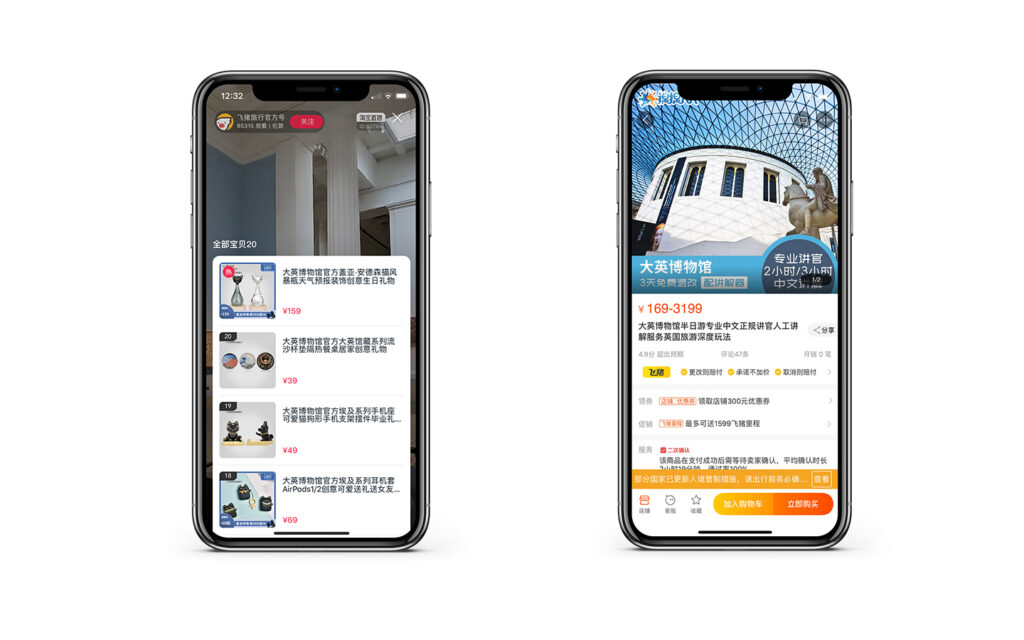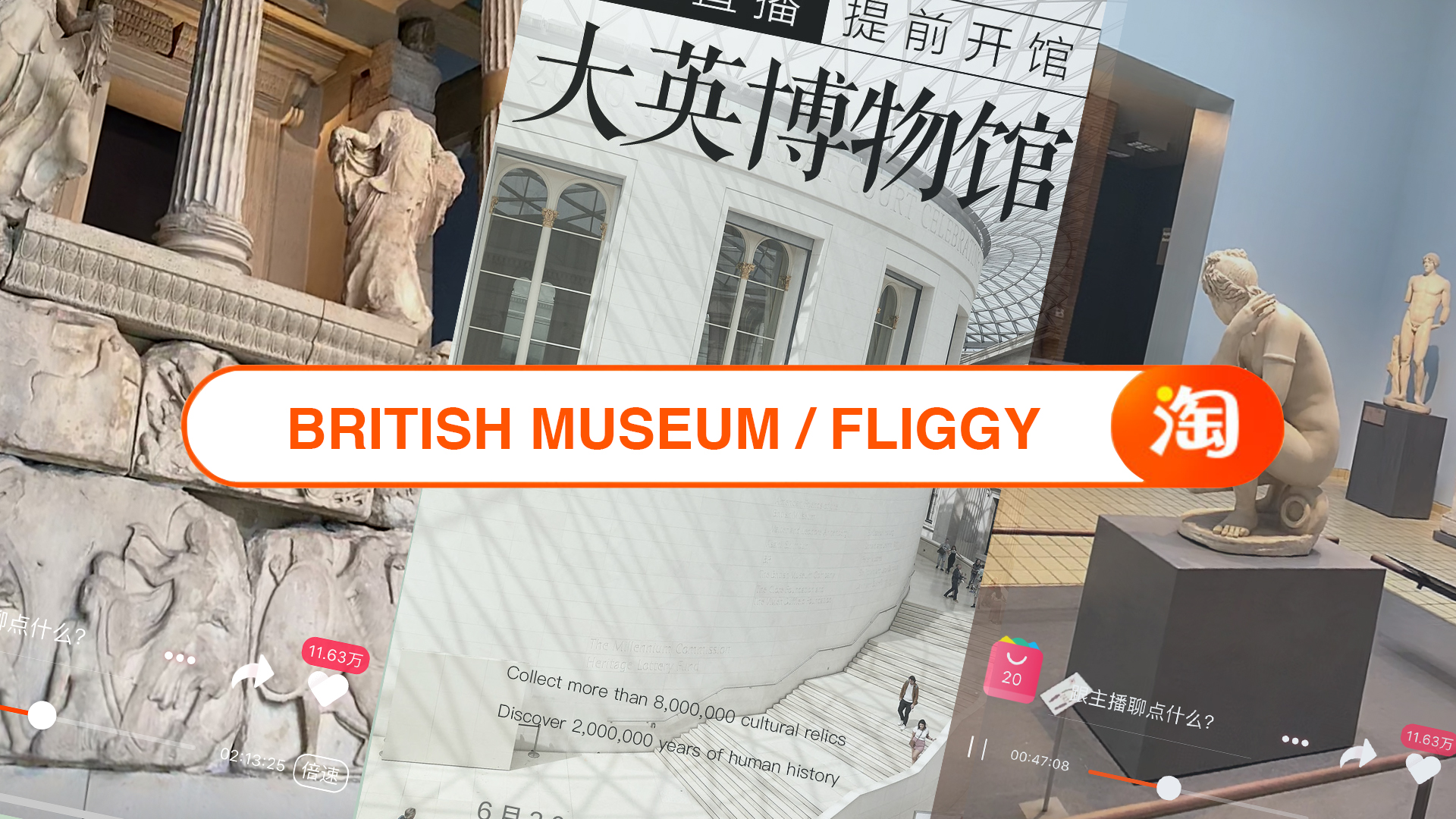Takeaways
- Down Stream. Cultural institutions integrating live streaming and e-commerce took hold in China during lockdown, the British Museum’s two-hour broadcast is both an engaging communication tool and a means of generating much-needed revenue.
- Leveraging Partnerships. Working with Fliggy helps the museum reach new audiences and furthers its relationship with Alibaba, a company which already platforms the sale of its IP products created specifically for the Chinese market.
Most of the six million annual visitors to the British Museum brave the crowds only to settle for an obscured glimpse of the Rosetta Stone. On June 30, however, Chinese fans of Egyptian archeology enjoyed the artifact unencumbered by needling elbows or cellphones held aloft as the London institution hosted a two-hour live stream on Fliggy, the travel subsidiary of tech giant Alibaba.
Closed since Mid-March, the live stream, hosted on the apps of Fliggy and e-commerce platform Taobao, toured pristine, vacant galleries offering the 370,000 viewers much-appreciated exclusivity — many filled the comment section with witty quips on skipping lines and beating the crowds. The move is in line with enterprising spirit of the British Museum which has repeatedly prioritized connecting to Chinese audiences in recent years.
After developing a strong social media presence on WeChat and Weibo throughout the 2010s, the museum has ventured into e-commerce and became the first international museum to launch on Alibaba’s online retail platform Tmall in 2018. Aside from enhancing its profile among Chinese cultural devotees, selling hieroglyphic jewelry, Hokusai stationery, and collaborative creations with Chinese brands is highly lucrative — it made $51 million in its first year online. Its latest initiative, the Fliggy live stream, is an astute integration of its informational and commercial successes.
Beginning with an introduction on the building’s architecture from Commercial Director Roderick Buchanan, the camera passed to a docent who guided viewers — with only a little hand shakiness — to Egyptian sculpture, through ancient Greece and Rome, and into the depths of Islamic art. Concise Chinese-language translation accompanied discussions of each artwork and transitions between galleries offered an opportunity for viewers to discuss and interact.

The British Museum received 116k likes throughout its two-hour broadcast on Fliggy and Taobao apps. Image: Peter Huang
On the commercial side, viewers were able to purchase British Museum merchandise directly on the live stream through tapping on links that popped-up at the bottom of the page. The trend of cultural institutions integrating live stream tours and e-commerce accelerated exponentially in China during the lockdown and Fliggy’s series “Cloud/Virtual Travel Europe” is bringing the practice to European museums.
In May, Fliggy partnered with tourism boards across Finland, France, Germany, Serbia, and the United Kingdom and ran a five-day live stream campaign that included a wildly successful tour of the Palace of Versailles (the Weibo video has more than one million views). Fliggy is striving to rival Chinese travel competitors, such as Ctrip and Qunar, for overseas market share, live streams at prominent cultural institutions will continue and the company has revealed plans to host more than 100 daily overseas live streams.
As for the British Museum, its next China move is the launch of a four-month long pop-up shop inside Shanghai’s Shimao Festival City, its boldest physical maneuver on the ground in China yet. Not bad for a museum yet to announce a reopening date.
Edited by Richard Whiddington



